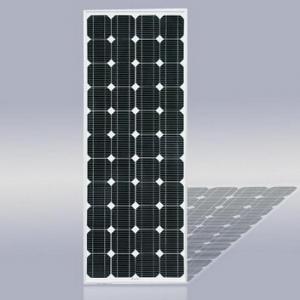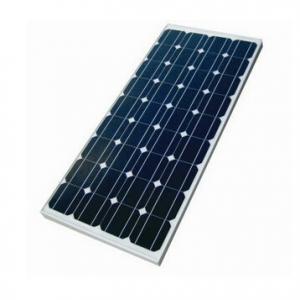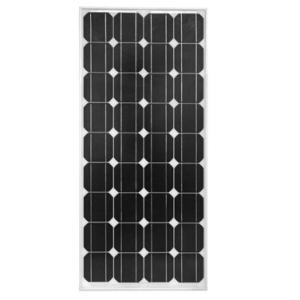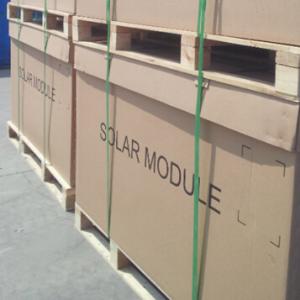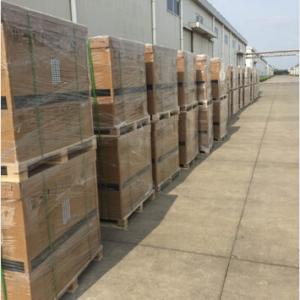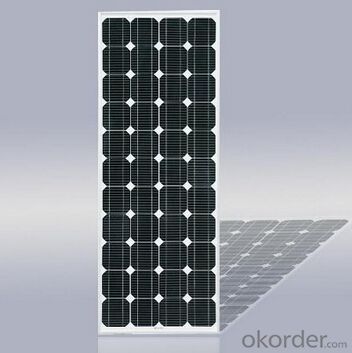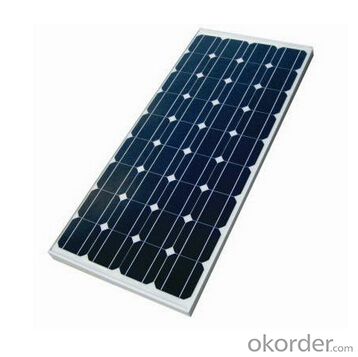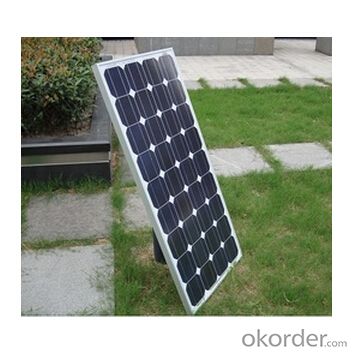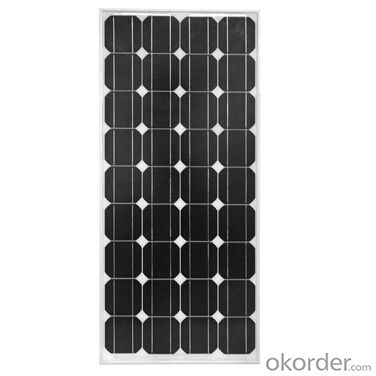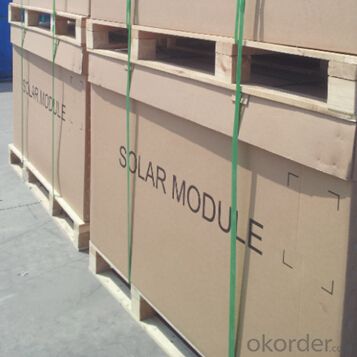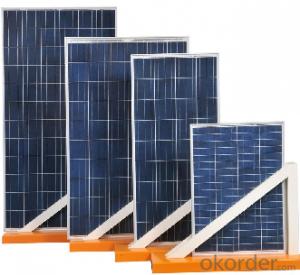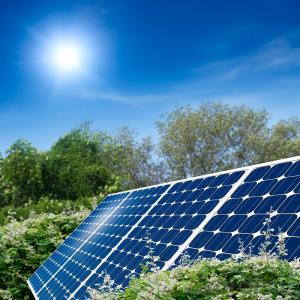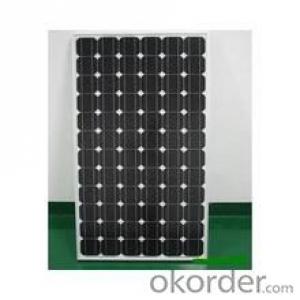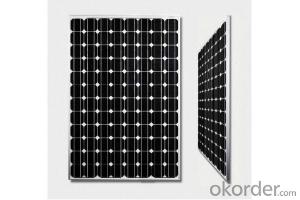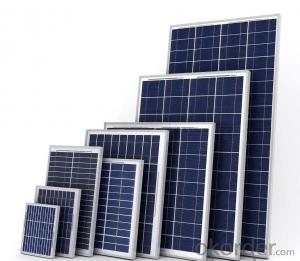Cheapest Monocrystalline Silicon Solar Panel 120w
- Loading Port:
- Shanghai
- Payment Terms:
- TT or LC
- Min Order Qty:
- 3000 watt
- Supply Capability:
- 20000000 watt/month
OKorder Service Pledge
OKorder Financial Service
You Might Also Like
Monocrystalline Silicon Solar Panel 120W : High efficiency crystalline solar cell.
Even if under the weak light, the solar module can produce maximum power output.
II Tempered glass (toughened glass): Anti-reflecting coating and high transmission rate glass increase the power output and mechanical strength of solar module.
III EVA and TPT: Using high quality EVA and TPT to prevent destroying and water.
IV AI frame: Without screw, rner connection. 6 holes on the frame can be installed easily.
V Junction box: Multi function junction box with water proof.
VI Long lifetime: ≥25 years; Less power decrease.
VII Good performance of preventing from atrocious weather such as wind and hails.
VIII Resisting moisture and etching effectively, not effected by geology.
Standard Test Conditions of Monocrystalline Silicon Solar Panel 120W :
The opto-electrical specifications shown below are stabilized values being measured at Standard Test Conditions, Irradiance: 1000W/m2, Spectrum: AM1.5 at 25°C, The info below is subject to manufacturing tolerances. Where appropriate minutes of measurement are available and are used for the dimensioning of the installation.
Advantages of Monocrystalline Silicon Solar Panel
• CNBM Solar performance guarantees for 25 years
• 12 years guarantee for workmanship
• Timeliness of delivery
Specification of Solar Monocrystalline 125mm Series
Temperature Coefficient of Cells
NOCT 47 ±2℃
Temperature Coefficients of Isc (%/℃) 0.06
Temperature Coefficients of Voc (%/℃ -0.32
Temperature Coefficients of Pmp (%/℃) -0.45
Mechanical Data
Dimension 1210x670 x30 mm
Weight 9.0kg
Tolerance ±3%
No. of cells 36(4*9)
Limits
Operating Temperature –45 °C to +80°C
Storage Temperature –45 °C to +80°C
Max System Voltage
Guarantees 700V
Products Guarantee 2 yrs free from defects in materials andworkmanship
Performance Guarantee No less than 90% within 10yrs and no lessthan 80% within 20yrs
Images of Monocrystalline Silicon Solar Panel

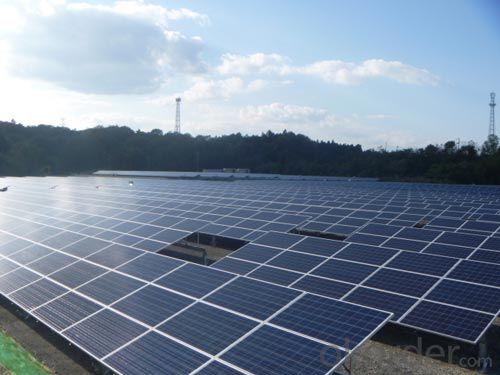
FAQ
We have organized several common questions for our clients,may help you sincerely:
①How about your company?
CNBM Solar photovoltaic (PV) Panel has various wattage from 1.5W to 315W to meet the demand of every customer. It is the optimal choice for both on-grid and off-grid power systems. CNBM Solar panel offers high performance of power warranty and good after sale service, we have professional people to reply your problem anytime.
CNBM International Corporation's products including Monocrystalline Solar Panel, Polycrystalline Solar Panel have received and enjoyed famous reputation in many countries and regions in the world .As a solar panel supplier in China, we strive to provide our customers with excellent service, superior products and unmatched value.
②How to guarantee the quality of the products?
CNBM Solar performance guarantees for 25 years
• 12 years guarantee for workmanship
• Timeliness of delivery
• Quality Products certified (TÜV, UL, CE, ISO)
③How long can we receive the product after purchase?
In the purchase of product within three working days, We will arrange the factory delivery as soon as possible. The pecific time of receiving is related to the state and position of customers.Commonly 7 to 10 working days can be served.
- Q: I am building a solar panel I have wired in series 36 .5 volt solar cells to produce 8 volts I have another panel that has 34 .5 volt solar cells to produce 7 volts. Any issues with wiring these 2 arrays in Parallel? I.E. would the smaller array take usable power away from the larger array?
- yes, i suggest u connect in parallel
- Q: Are there any maintenance requirements for solar panels?
- Yes, solar panels do require some maintenance. Regular cleaning of the panels to remove dirt, dust, and debris is recommended to ensure optimal performance. Additionally, it is important to inspect the panels for any signs of damage or wear, and if necessary, have them repaired or replaced. Monitoring the system's performance and checking the connections regularly is also crucial for identifying any issues.
- Q: if i have a 0 Watt solar panel what does that mean. does that mean it will charge a battery 0 watts per hour? Lets say i hook this up to a car battery and use the car battery to run computer stuff. How much will this charge the battery?
- Watts okorder /
- Q: I have a 20 watt solar panel that I want to set up. I need to connect it to the solar controller but do not know what cable to use. I plan on adding more solar panels down the line. What would be the best cable to use?
- 4 awg wire is good for 5 amps and will handle 9 total panels at 2 volts
- Q: How do solar panels affect the value of a home?
- Solar panels can significantly increase the value of a home. They offer long-term cost savings on electricity bills and can generate additional income through net metering or selling excess energy back to the grid. Additionally, solar panels are environmentally friendly, which appeals to many buyers and can make a property more attractive in the market.
- Q: Can solar panels be installed on a pergola or gazebo?
- Yes, solar panels can be installed on a pergola or gazebo. Both structures provide an ideal location for solar panel installation, as they offer unobstructed exposure to sunlight. Additionally, integrating solar panels into a pergola or gazebo can enhance their functionality by providing shade, while generating renewable energy at the same time.
- Q: Could you throw some long scientific words in with your answer so I can impress my teacher, I'm looking to expand my scientific vocab. Thanks
- Solar panels are a generic term for any type of solar collecting panel. There are two major types: Photovoltaic uses substances that turn the incoming radiation directly into electricity. Usually you have to have direct sunlight (no clouds) for this to work well. Solar thermal is also used in a lot of areas. Here the radiation is used to heat a circulating fluid (often water directly), and then that is either used directly, or it's used for heat exchange with a heat pump or a boiler system. Solar thermal can collect significant heat even on a cloudy day. So a solar panel could be made of photovoltaic panels, but it doesn't have to be.
- Q: My solar panel is 24long..It is set at 45deg..the arms are 8quot;long to achieve that angle for winter. I need to get to 7deg for summer..how long will the new arms need to be?..in layman's terms please...thx
- 2.20 approximatey (2 /4 -- ish) X = (tan7)(8/tan45)
- Q: I'm thinking of doing solar panel but i don't know how much they are i need help! please!
- no one has answered because you asked a question that cannot be answered. It is exactly the same question as how much is a car?. Do you want a passive solar heating panel, a solar electric panel, .5 Volts, ,000,000 BTUs, do you want just the panel or the panel installed and functioning, or what? the answer is between $5 and $5,000,000.
- Q: Are there any risks associated with solar panel installation?
- Yes, there are a few risks associated with solar panel installation. These include the potential for damage to the roof during installation, the risk of electrical shock if not installed properly, and the possibility of fire hazards if the electrical system is not correctly designed or maintained. However, by hiring professional installers and following safety guidelines, these risks can be minimized.
Send your message to us
Cheapest Monocrystalline Silicon Solar Panel 120w
- Loading Port:
- Shanghai
- Payment Terms:
- TT or LC
- Min Order Qty:
- 3000 watt
- Supply Capability:
- 20000000 watt/month
OKorder Service Pledge
OKorder Financial Service
Similar products
Hot products
Hot Searches
Related keywords
